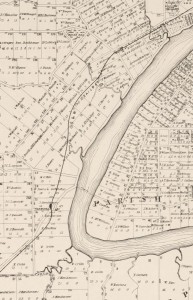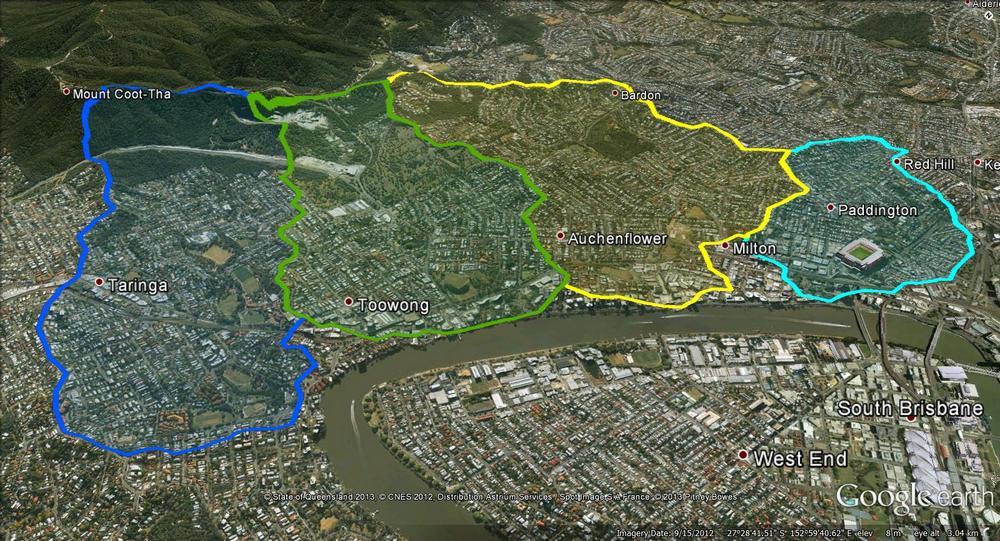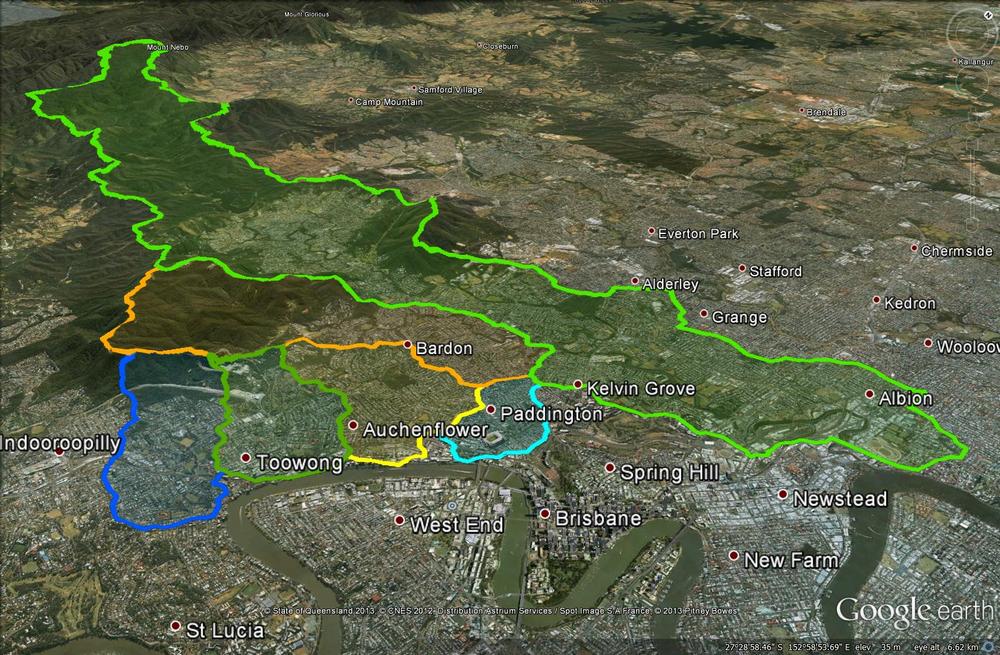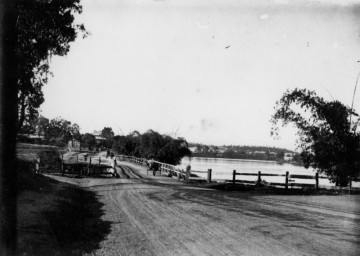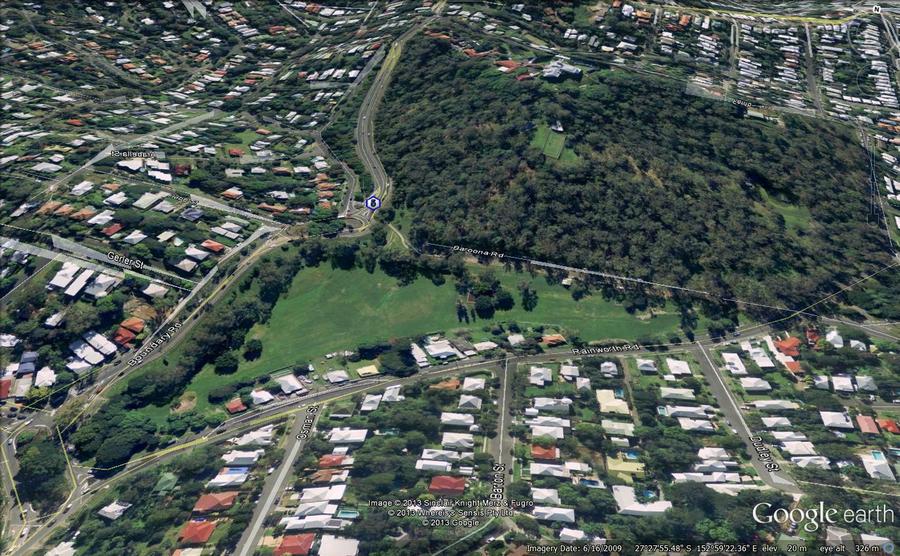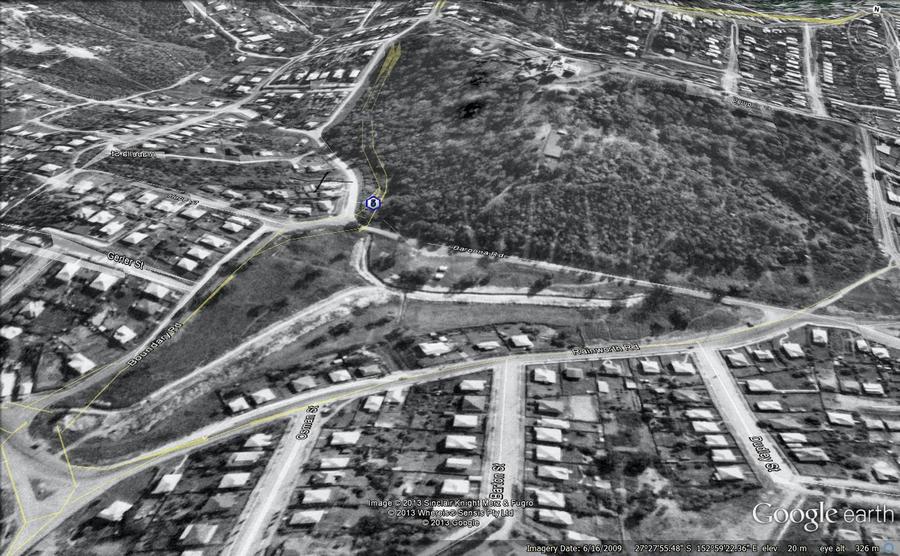It’s always good to learn that you are not alone in pursuing a particular passion. It’s a welcoming sign that you might not be crazy after all, or that if you are, you are at least in good company. The history of Brisbane’s creeks (extinct or otherwise) is not a topic that has received a lot of attention. This is, I’ll admit, partly why the topic appealed to me. But at the same time, I liked to believe that I wasn’t the only one spending so much time thinking about it.
This is why I was delighted to meet Trish FitzSimons and learn about her research into Norman Creek. Trish is a documentary film maker and social historian who has made two beautiful short films exploring Norman Creek and its place in the lives of people who have lived, and worked and played on its waters, its shores and its floodplain.
Unlike Western Creek, Norman Creek is not just a faded memory. It is still very much alive and flowing — at least in parts. Its mangrove-flanked lower reaches meander through the suburbs of East Brisbane, Norman Park and Coorparoo, but its catchment area extends all the way up to the slopes of Mount Gravatt.
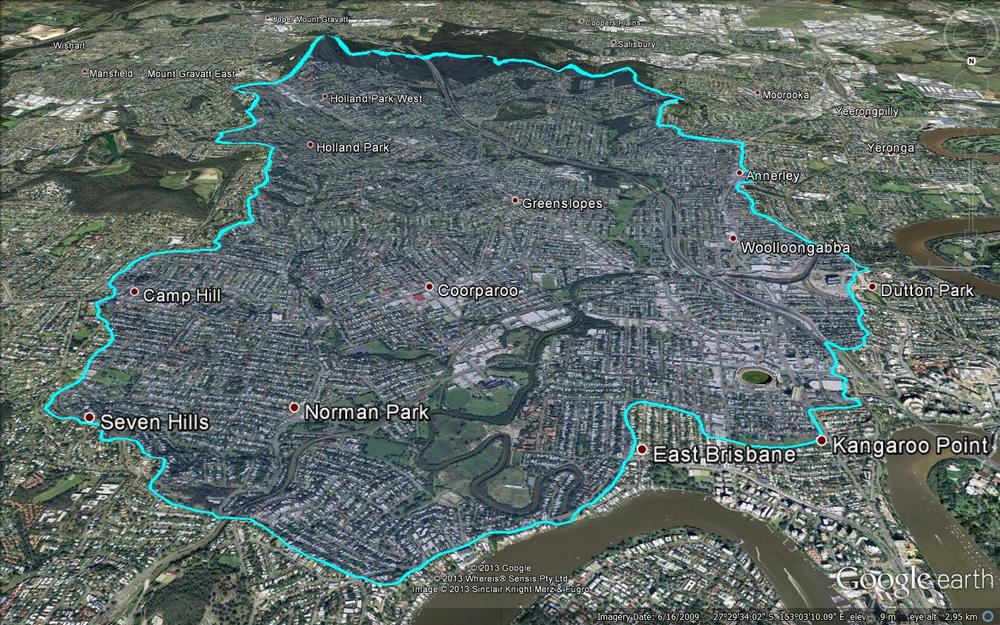
The catchment area of Norman Creek. (Catchment boundary obtained from this map created by the Norman Creek Catchment Coordinating Committee.)
This is a creek that has seen its fair share of use, abuse, transformation and rejuvenation over the years. And yet its story, so rich in both social and natural history, is probably all but unknown to the many people who walk past or drive over it every day. Trish’s two films — Time and Tide: The Life of Norman Creek and Time and Tide: The Boat Builders of Norman Creek — reveal how the creek has supported industry, provided livelihoods, even inspired poetry. The films also highlight how the creek has in turn been shaped and transformed over the years by a community grappling with the legacy of floodplain development.
You can watch Trish’s films via the links on this page of the website of the Norman Creek Catchment Coordinating Committee. The films were made using support from the Lord Mayor’s ‘Helen Taylor bequest for Local History’, and they are an important contribution to the story of our city. Yet at the same time, they are but tantalising sips from a much deeper pool of history that is waiting to be explored. Trish tells me that she has many more stories to tell about Norman Creek, and that they might even feature in a public exhibition somewhere down the line. I can’t wait to dive in!

